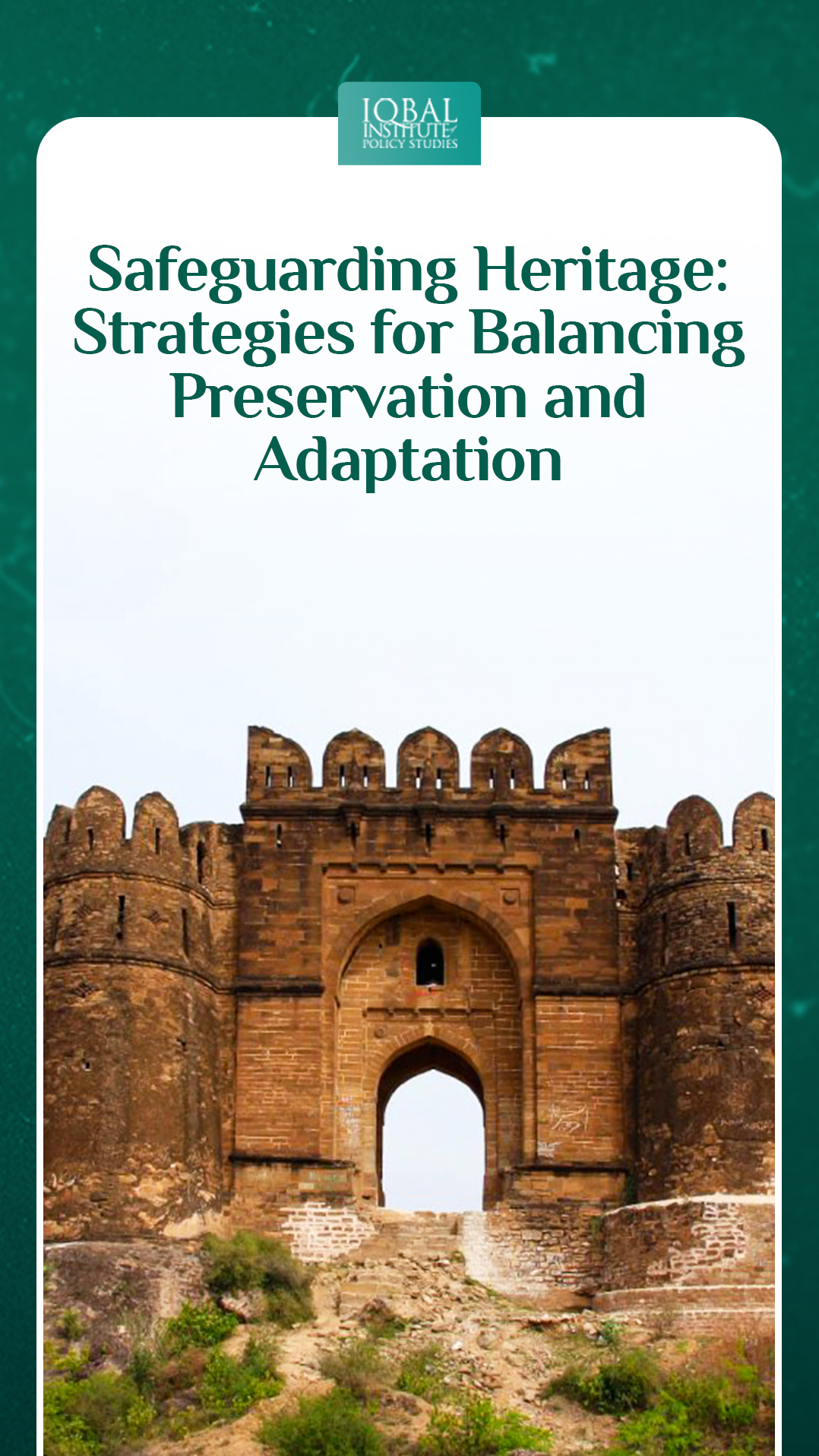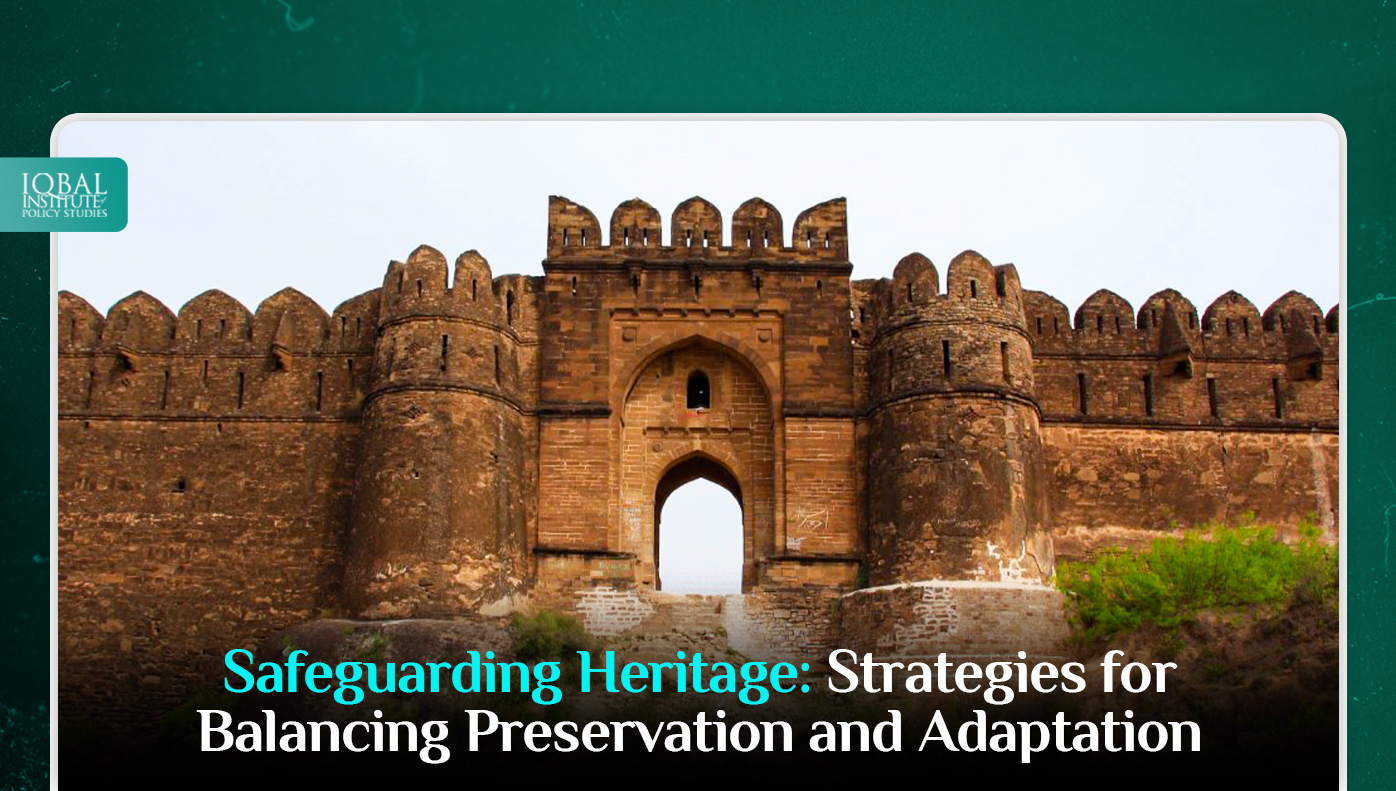Pakistan, a land rich in cultural diversity and historical significance, boasts many heritage sites that reflect its rich history, architectural marvels, and cultural traditions. As the nation strives to modernize and adapt to changing times, the delicate balance between preserving its precious heritage and promoting development becomes crucial. In this deeply extended blog, we will explore the challenges of safeguarding Pakistan’s heritage, discuss strategies for striking the right balance between preservation and adaptation, and highlight the importance of collective efforts in ensuring a sustainable future for Pakistan’s cultural legacy.
Understanding the Significance of Pakistan’s Heritage
Understanding the significance of Pakistan’s heritage transcends the realm of tangible artefacts and historical sites; it encapsulates the essence of the nation’s identity, culture, and shared history. Pakistan’s heritage is a testament to its ancestors’ ingenuity, craftsmanship, and resilience, reflecting the diverse tapestry of civilizations that have flourished on its soil.
The country is home to a myriad of heritage sites, including ancient civilizations such as Mohenjo-Daro and Harappa, Mughal architectural wonders like the Badshahi Mosque and Lahore Fort, and the stunning landscapes of the Karakoram Range.
From the meticulously designed Mughal architecture to the ancient cities of the Indus Valley, each heritage site carries stories of innovation, human achievement, and the intricate interplay between people and their surroundings.
These sites offer a window into the past and a foundation upon which future generations can build their understanding of their roots and cultural heritage. As custodians of this invaluable legacy, the people of Pakistan are responsible for preserving, nurturing, and sharing these treasures, ensuring that they continue to inspire, educate, and connect people from all walks of life.
Challenges in Heritage Conservation
Urbanization and Development Pressure
Rapid urbanization and infrastructure development often lead to encroachment on heritage sites and their surroundings. This threatens the integrity and authenticity of these sites, affecting their historical and cultural value.
Lack of Awareness and Education
Many citizens, especially in rural areas, may need to grasp the significance of heritage sites fully. Educating communities about the importance of preservation is crucial for garnering public support.
Inadequate Funding and Resources
Heritage conservation projects require funding, expertise, and resources. Limited budgets and competing priorities can hinder efforts to effectively preserve and maintain heritage sites.
Natural Disasters and Climate Change
Heritage sites are vulnerable to natural disasters and climate change impacts, such as flooding, earthquakes, and erosion. Ensuring their resilience against such events is a critical challenge.
Balancing Modernization and Preservation
Striking a balance between modern development and heritage preservation is complex. Preservation efforts should not hinder progress but rather complement it.
Strategies for Balancing Preservation and Adaptation
Community Engagement and Education
Building a sense of ownership and pride among local communities is vital. Educational programs, workshops, and awareness campaigns can help communities understand the value of heritage and actively participate in its preservation.
Integrated Urban Planning
Government authorities and urban planners should integrate heritage considerations into city planning. Designated buffer zones around heritage sites can protect their visual and environmental context.
Adaptive Reuse
Adapting heritage structures for modern purposes can breathe new life into old sites. Converting historical buildings into museums, cultural centres, or boutique hotels can generate revenue for their maintenance while preserving their character.
Public-Private Partnerships
Collaborations between government bodies, private sector entities, and nonprofit organizations can pool resources and expertise to fund and execute conservation projects effectively.
Heritage Impact Assessments
Similar to environmental impact assessments, heritage impact assessments should be conducted before any development project near a heritage site. This ensures that potential risks to heritage values are identified and mitigated.
Incorporating Traditional Techniques
Utilizing traditional construction and preservation techniques can help maintain the authenticity of heritage sites while promoting the continuation of traditional craftsmanship.
Digital Documentation
Creating digital replicas and archives of heritage sites using technologies like 3D scanning and virtual reality can aid in documentation, research, and public engagement.
Legislation and Enforcement
Strengthening existing heritage preservation laws and regulations and effective enforcement mechanisms can deter encroachment and unauthorized construction near heritage sites.
Collective Efforts for a Sustainable Future
Safeguarding Pakistan’s heritage requires a united effort from all sectors of society. These collective efforts are pivotal in shaping a sustainable future for Pakistan’s invaluable heritage. As diverse stakeholders unite in a shared commitment to safeguarding the country’s cultural legacy, preserving and adapting heritage sites becomes a harmonious endeavour.
Government agencies can enact robust legislation and regulatory frameworks bolstered by effective enforcement mechanisms to protect heritage sites from encroachment and unauthorized development. When empowered through education and awareness initiatives, local communities become staunch advocates for protecting their cultural heritage, fostering a sense of ownership and pride.
Collaborations between public and private sectors and partnerships with international organizations and academia provide the necessary resources, expertise, and innovative approaches needed for comprehensive conservation projects. These joint endeavours contribute to the preservation of tangible structures and invigorate intangible traditions, stories, and ways of life that define Pakistan’s rich heritage.
Ultimately, through the collective dedication and unwavering passion of these diverse actors, a sustainable future for Pakistan’s heritage is ensured, bridging the gap between the past and the present while paving the way for generations to come.
Conclusion
As Pakistan navigates the challenges of modernization and development, safeguarding its heritage remains a responsibility that cannot be overlooked. Striking the delicate balance between preservation and adaptation is a multifaceted endeavour that demands careful planning, community involvement, and innovative strategies. By valuing and preserving its heritage, Pakistan can ensure that future generations continue to be inspired by the rich tapestry of its history, culture, and architectural marvels. The path to a sustainable future for Pakistan’s heritage requires dedication, creativity, and a shared commitment to preserving the nation’s legacy.
This article is written by Radma Nouman. Radma is a research analyst at the Iqbal Institute of Policy Studies (IIPS).



Leave a Reply